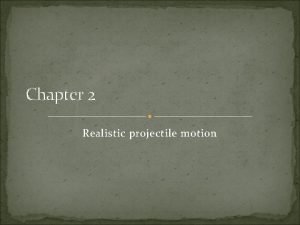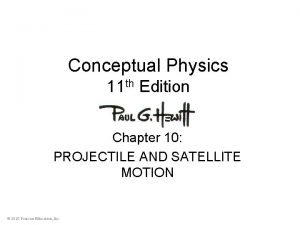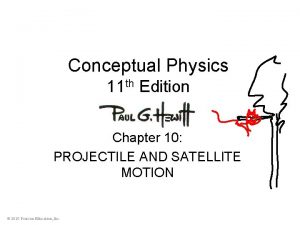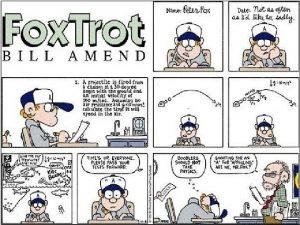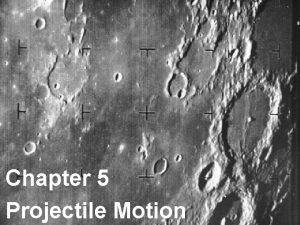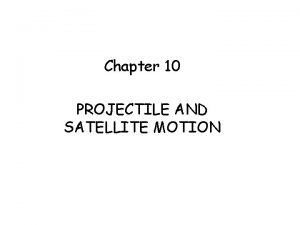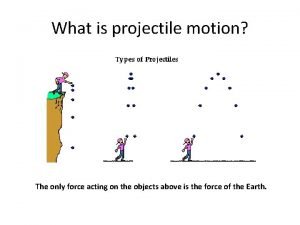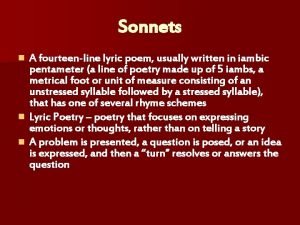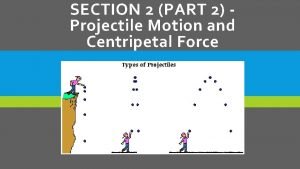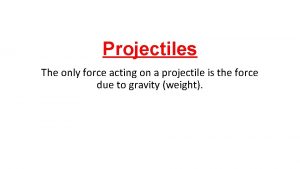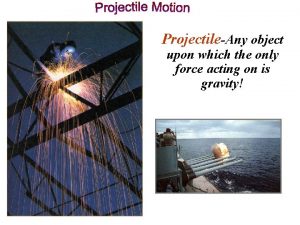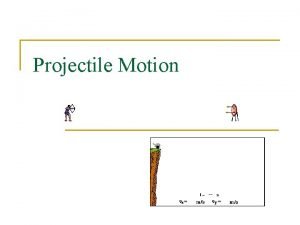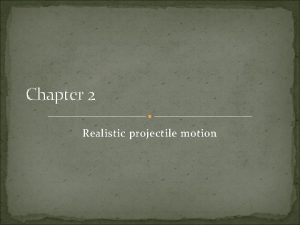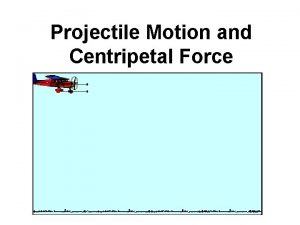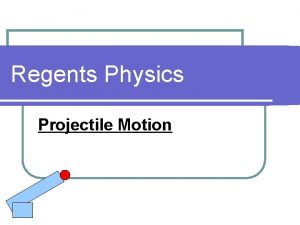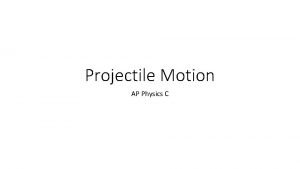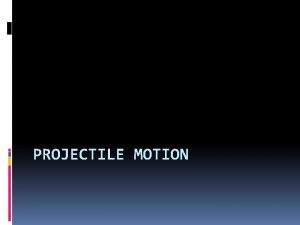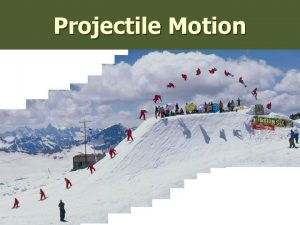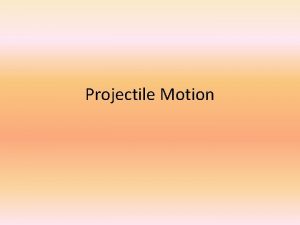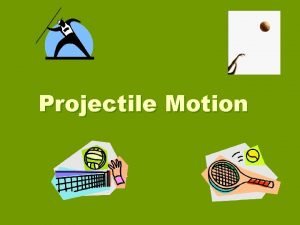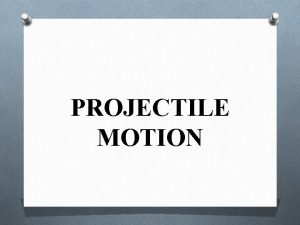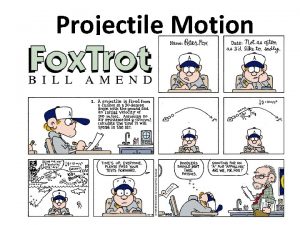Chapter 2 Realistic projectile motion 2 1 Frictionless
















- Slides: 16

Chapter 2 Realistic projectile motion

2. 1 Frictionless motion with Newton’s law E total energy of the moving object, P the power supplied into the system.

+ O(Dt 2)

Pseudocode Initialisation: Set values for P, mass m, and time step D t, and total number of time steps, N, initial velocity v 0. Do the actual calculation vi+1= vi + (P/mvi)Dt ti+1= ti + Dt Repeat for N time steps. Output the result

Adding friction to the Equation of Motion Frictionless motion is unrealistic as it predicts velocity shoots to infinity with time. Add in drag force, innocently modeled as B 2 Cr. A/2 2 C ~ 1, depend on aerodynamics, measured experimentally

The effect of F drag is to modify P P – F drag v

1 D free fall with drag force Develop a code that shows the variation of velocity with time for a 1 D object, which is constantly being pumped in energy at a given rate fix rate, P, and an non-zero initial velocity v 0. For a object undergoing 1 D free fall motion along the vertical direction, P = -d. U/dt = -d/dt(mgy)=-mgvy So that

2. 2 Projectile motion: The trajectory of a cannon shell Two second order differential equations. Wish to know the position (x, y) and velocity (vx, vy) of the projectile at time t, given initial conditions. y g 0 x

2. 2 Projectile motion: The trajectory of a cannon shell Four first order differential equations. Euler’s method Eq. 2. 15 Eq. 2. 16

2. 2 Projectile motion: The trajectory of a cannon shell Drag force comes in via

Trajectory of a cannon shell with drag force vi = (vx, i 2+vy, i 2)1/2 i i

Air density correction Drag force on a projectile depends on air’s density, which in turn depends on the altitude. Two types of models for air’s density dependence on altitude: Isothermal approximation - simple, assume constant temperature throughout, corresponds to zero heat conduction in the air. S m mass of air’s molecule • Adiabatic approximation - more realistic, assume poor but non-zero thermal conductivity of air.

Correction to the drag force The drag force w/o correction corresponds to the drag force at sea-level, with For general altitude, it has to be modified:

Isothermal approximation: Adiabatic approximation:

Trajectory of a cannon shell with drag force, corrected for altitude dependence of air density vi = (vx, i 2+vy, i 2)1/2 i i

Curves with thermal and adiabatic correction Modify the existing code to produce the curves as in Figure 2. 5, page 30, Giordano 2 nd edition.
 Realistic projectile motion
Realistic projectile motion Chapter 10 projectile and satellite motion tossed ball
Chapter 10 projectile and satellite motion tossed ball Chapter 10 projectile and satellite motion
Chapter 10 projectile and satellite motion Chapter 5 projectile motion exercises
Chapter 5 projectile motion exercises When no air resistance acts on a projectile
When no air resistance acts on a projectile Chapter 10 projectile and satellite motion tossed ball
Chapter 10 projectile and satellite motion tossed ball Chapter 2 section 1 describing motion answer key
Chapter 2 section 1 describing motion answer key Measuring motion
Measuring motion Section 1 describing motion answer key
Section 1 describing motion answer key Only force acting on a projectile
Only force acting on a projectile Symmetrical projectile motion
Symmetrical projectile motion Motion map examples
Motion map examples A 14 line lyric poem written in iambic pentameter
A 14 line lyric poem written in iambic pentameter An object in projectile motion will follow which path?
An object in projectile motion will follow which path? What is the only force acting on a projectile
What is the only force acting on a projectile An object upon which the only force acting is gravity.
An object upon which the only force acting is gravity. What is projectiles
What is projectiles
